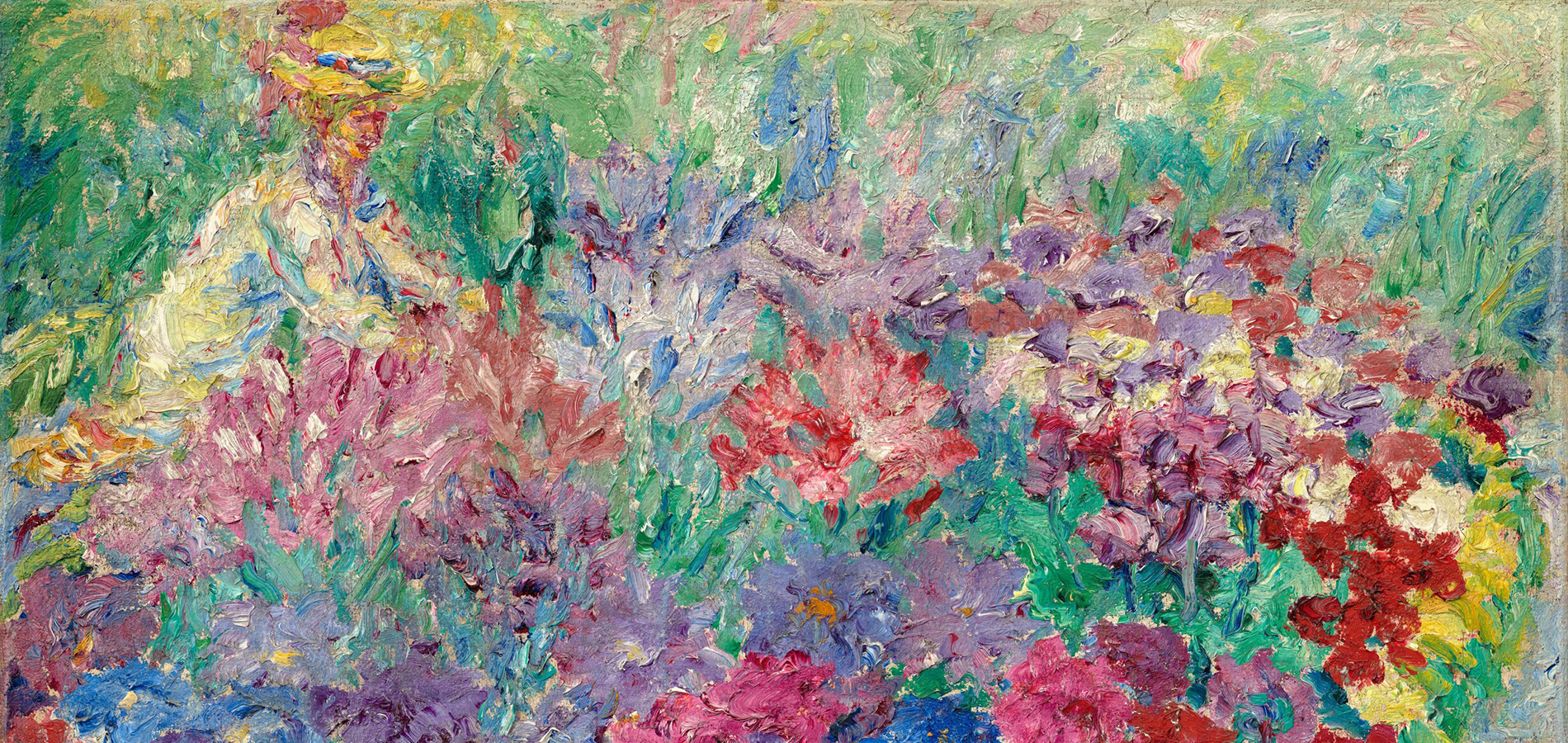34 Artworks About Love at the National Gallery
Get in the mood with works of art from the heart.
Art in Focus
min read

The flowers are blooming, the weather is warming . . . spring is upon us!
To celebrate the start of the season, we’ve picked out artworks of flourishing flowers, green gardens, lush landscapes, and beautiful bonnets. Many are on view for you to explore; others are hidden gems from our collection that you may not have seen before. Discover how spring has inspired artists, and how it may inspire you.
Art in Bloom
Flowers like lilies and tulips have served as the subject of works by countless artists, from 17th-century Dutch still life painter
Balthasar van der Ast, Basket of Flowers, c. 1622, oil on panel, Collection of Mrs. Paul Mellon, 1992.51.2. On view: West Building, Main Floor — Gallery 50-B

Emil Nolde, Flower Garden, Kneeling Woman with Hat, 1908, oil on canvas, Collection of Arnold and Joan Saltzman, 2020.112.4. On view: East Building, Mezzanine — Gallery 217-A

Alma Thomas, Pansies in Washington, 1969, acrylic on canvas, Corcoran Collection (Gift of Vincent Melzac), 2015.19.144. On view: East Building, Upper Level — Gallery 407-C

Florence V. Cannon, Easter Lily, 1945, color screenprint on laid paper, Reba and Dave Williams Collection, Gift of Reba and Dave Williams, 2008.115.1159

Lou Stovall, Breathing Hope, 1996, color screenprint on wove paper, Gift of Lou, Di Bagley and Will Stovall, 2007.54.1
Spring Landscapes
French post-impressionist painter

Pierre Bonnard, A Spring Landscape, c. 1935, oil on canvas, Ailsa Mellon Bruce Collection, 1970.17.10. On view: East Building, Ground Level — Gallery 103-E

Maurice de Vlaminck, Chestnut Trees in Bloom, c. 1905/1906, oil on canvas, Collection of Mr. and Mrs. Paul Mellon, 2014.18.60. On view: East Building, Mezzanine — Gallery 217-B

Dora Louise Murdoch, Parmelee Estate in Bloom, c. 1920, watercolor on wove paper, Corcoran Collection (Bequest of James Parmelee), 2015.19.511

Shikō Munakata, Spring in Full Bloom, woodcut, Rosenwald Collection, 1964.8.1327, view more prints by Japanese artists

Vincent van Gogh, Green Wheat Fields, Auvers, 1890, oil on canvas, Collection of Mr. and Mrs. Paul Mellon, 2013.122.1. On view: West Building, Main Floor — Gallery 83

George Morrison, Untitled, 1961, oil on canvas, Gift of Funds from David M. Rubenstein, 2022.123.1. On view: East Building, Upper Level — Gallery 407-B

Doris Lee, Blossom Time, 1959, color lithograph, Reba and Dave Williams Collection, Gift of Reba and Dave Williams, 2008.115.3091
Spring Fashion
Nothing quite says spring like a fancy hat. According to the subjects of these works, ideally it should be broad, decorated with a ribbon and some flowers. And probably accompanied by a fancy coat, frilly dress, or spiffy suit.

Mary Cassatt, The Boating Party, 1893/1894, oil on canvas, Chester Dale Collection, 1963.10.94. On view: West Building, Main Floor — Gallery 86

Florence Earl, Hat, 1935/1942, watercolor, graphite, and colored pencil on paperboard, Index of American Design, 1943.8.9563

Henri Matisse, The Plumed Hat, 1919, oil on canvas, Chester Dale Collection, 1963.10.168

French 20th Century, Woman with Umbrella in Garden, c.1910, Autochrome, Gift of Charles Isaacs and Carol Nigro, 2006.169.9

Nancy Andrews, The Digging Dykes of Decatur, 1993, gelatin silver print, Corcoran Collection (Gift of the artist), 2015.19.4573

Gordon Parks, Marva Louis, Chicago, 1941, gelatin silver print, Corcoran Collection (The Gordon Parks Collection), 2016.117.103

Carrie Mae Weems, May Flowers, 2002, printed 2013, chromogenic print, Alfred H. Moses and Fern M. Schad Fund, 2014.3.1

Louise Dahl-Wolfe, Joan Fontaine, 1938, gelatin silver print, Alfred H. Moses and Fern M. Schad Fund, 2018.97.2
Interpretations of Spring
In allegories, the subject of a work symbolizes something broader—in these works, a season. The French marble sculpture A Garden Allegory shows a woman with an angelic little cupid. She represents Herse, the Goddess of dew, and the cupid stands in for another mythological figure: Zephyr or Zephyrus, the God of spring.

Giacomo Quarenghi, An Ornate Ceiling with an Allegory of Spring,
1790/1815, pen and black ink with watercolor over graphite on faintly
blued-green laid paper, Ailsa Mellon Bruce Fund, 1993.13.2, on view in Looking Up: Studies for Ceilings, 1550–1800

Ruth Asawa, Spring, 1965, lithograph (stone) in two greens and green-brown on white Arches paper, Gift of Dorothy J. and Benjamin B. Smith, 1983.18.186

Benoît Massou, Anselme Flamen, and Nicolas Rebillé, A Garden Allegory: The Dew and Zephyr Cultivating Flowers, 1683/1732, marble, Samuel H. Kress Collection, 1952.5.106. On view: West Building, Main Floor — East Sculpture Hall

Elie Abrahami, Spring, 1993, watercolor on heavy wove paper, Gift of George and Janet Jaffin, 1994.8.1